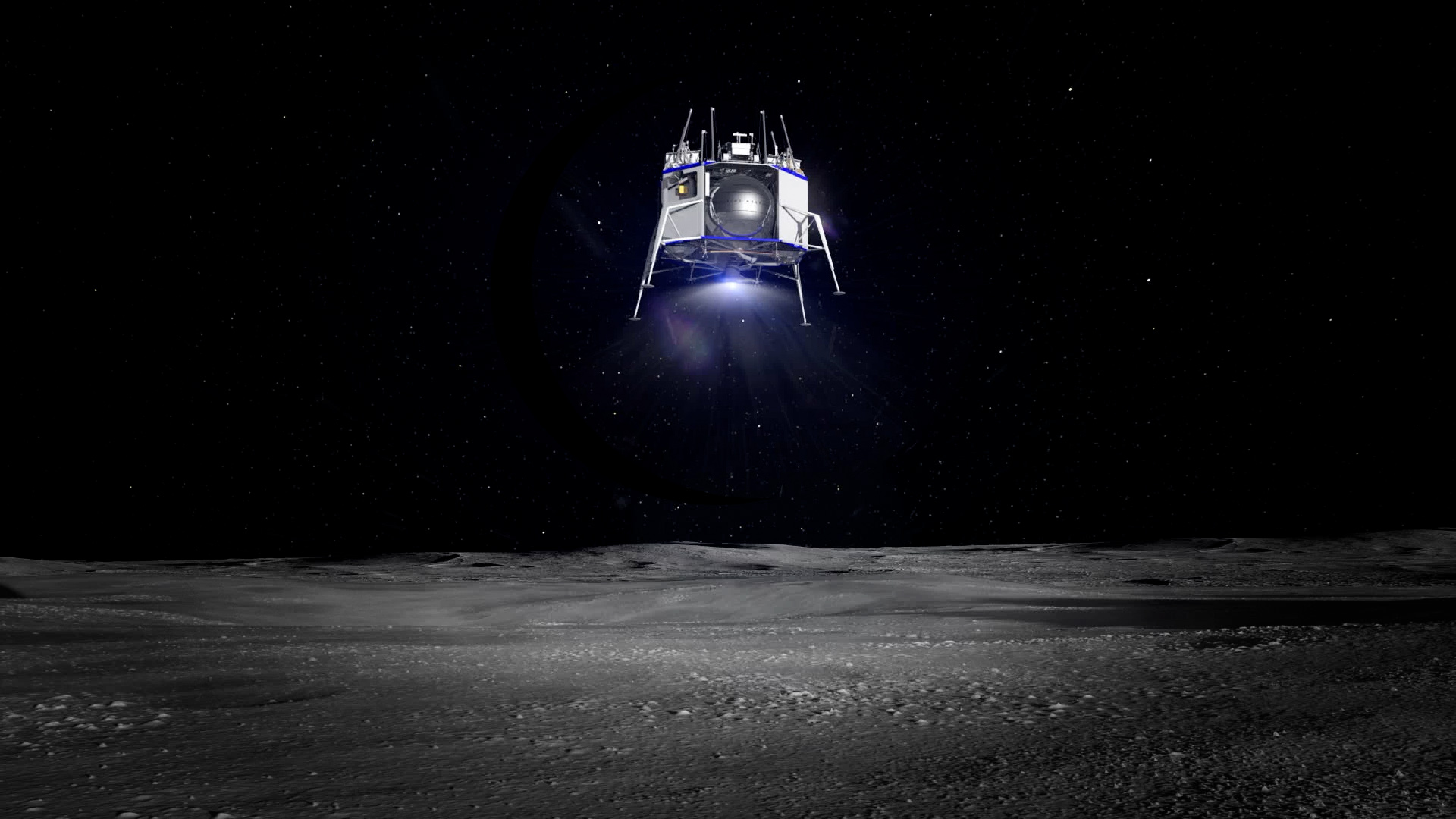Jeff Bezos has unveiled Blue Origin’s lunar lander

He revealed details about the company’s new rocket, engine, and lunar lander at a private event in Washington, DC, today.
Behind curtain number one … Jeff Bezos unveiled Blue Moon, the company’s lunar lander that has been in the works for the past three years. It will be able to land a 6.5-metric-ton payload on the moon’s surface. Watch Blue Origin’s video rendering of what Blue Moon’s lunar landing could look like here.
Who’s hitching a ride? The company announced a number of customers that will fly on Blue Moon, including Airbus, MIT, Johns Hopkins, and Arizona State University.
How are they getting there? New Glenn. This is by far the biggest rocket Blue Origin has ever built. The size will allow the massive Blue Moon lander to fit inside. It will have fewer weather constraints and will be rated to carry humans from the start. As with New Shepard, the company’s suborbital rocket, as well as SpaceX’s rockets, the first stage will be reusable, landing again after completing its mission. The first launch is targeted for 2021.
The new engine: Blue Origin also announced that the new BE-7 engine, which packs 10,000 pounds of thrust, will undergo its first hot fire test this year. This engine will propel Blue Moon.
Reinforcing a promise: “We’re going to be flying humans in New Shepard this year. That’s incredibly exciting,” says Bezos. That’s a promise that has been made before, but Bezos further solidified the commitment.
Going back to the moon: Bezos emphasized that Blue Origin can help achieve NASA’s plan to go back to the moon by 2024. “It’s time to go back to the moon. This time to stay,” he said.
Want to keep up to date with space tech news? Sign up for our space newsletter, The Airlock.
Deep Dive
Space
The quest to figure out farming on Mars
If we’re going to live on Mars we’ll need a way to grow food in its arid dirt. Researchers think they know a way.
NASA’s Europa Clipper spacecraft is set to look for life-friendly conditions around Jupiter
After a big setback, the spacecraft's team hopes to assess how well the moon could support life.
Life-seeking, ice-melting robots could punch through Europa’s icy shell
Researchers are working on technology that could follow NASA’s Europa Clipper mission and hunt for life in the ocean of Jupiter’s moon.
What’s next for NASA’s giant moon rocket?
The Space Launch System is facing fresh calls for cancelation, but still has a key role to play in NASA’s return to the moon.
Stay connected
Get the latest updates from
MIT Technology Review
Discover special offers, top stories, upcoming events, and more.